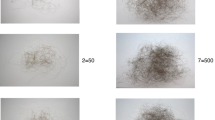Abstract
The present study assessed perceptions of effective sun-protection strategies among the general public and whether these perceptions have changed in recent years. During five summers from 2007/2008 to 2011/2012, 4217 adolescents and adults living in a region with very high levels of solar UV radiation participated in annual, cross-sectional telephone surveys. Respondents’ perceptions of the most effective sun-protection strategy were measured with a single open-ended question. In all survey years, sunscreen was the by far most frequently nominated sun-protection strategy, with an average mention rate of 71.0 %. The tendency to nominate sunscreen increased significantly over the 5-year study period and on average, was more common among adolescents compared to adults (81.6 vs 60.0 %) and females compared to males (73.6 vs 68.3 %). Despite respondents’ increasing tendency to nominate sunscreen as the most effective sun-protection strategy, health experts have voiced concerns about flawed application practices. Current sun-protection hierarchies indicate that protective clothing and shade are better options.
Similar content being viewed by others
References
Greinert R, De Vries E, Erdmann F, et al. (2015) European code against cancer 4th edition: Ultraviolet radiation and cancer. Cancer Epidemiol.
Montague M, Borland R, Sinclair C (2001) Slip! Slop! Slap! and SunSmart, 1980–2000: skin cancer control and 20 years of population-based campaigning. Health Educ Behav 28:290–305
Linos E, Keiser E, Fu T, Colditz G, Chen S, Tang JY (2011) Hat, shade, long sleeves, or sunscreen? Rethinking US sun protection messages based on their relative effectiveness. Cancer Causes Control 22:1067–1071
Diffey BL (2004) What can be done to reduce personal ultraviolet radiation exposure? In: Hill DJ, Elwood JM, English DR (eds) Prevention of skin cancer. Kluwer Academic Publishers, Dordrecht, pp 241–258
Ghiasvand R, Lund E, Edvardsen K, Weiderpass E, Veierod MB (2015) Prevalence and trends of sunscreen use and sunburn among Norwegian women. Br J Dermatol 172:475–483
Green AC, Williams GM, Logan V, Strutton GM (2011) Reduced melanoma after regular sunscreen use: randomized trial follow-up. J Clin Oncol 29:257–263
Iannacone MR, Hughes MCB, Green AC (2014) Effects of sunscreen on skin cancer and photoaging. Photodermatol Photoimmunol Photomed 30:55–61
U.S. Department of Health and Human Services. The surgeon general’s call to action to prevent skin cancer. Washington, DC: U.S. Department of Health and Human Services, Office of the Surgeon General; 2014.
Diepgen T, Mahler V (2002) The epidemiology of skin cancer. Br J Dermatol 146:1–6
Holman DM, Berkowitz Z, Guy GP, Hawkins NA, Saraiya M, Watson M (2015) Patterns of sunscreen use on the face and other exposed skin among US adults. J Am Acad Dermatol 73:83–92
Bandi P, Cokkinides VE, Weinstock MA, Ward E (2010) Sunburns, sun protection and indoor tanning behaviors, and attitudes regarding sun protection benefits and tan appeal among parents of U.S. adolescents—1998 compared to 2004. Pediatr Dermatol 27:9–18
Davis R, Loescher LJ, Rogers J et al (2015) Evaluation of project Students are Sun Safe (SASS): a university student-delivered skin cancer prevention program for schools. J Cancer Educ 30:736–742
Sinclair C, Foley P (2009) Skin cancer prevention in Australia. Br J Dermatol 161:116–123
Author information
Authors and Affiliations
Corresponding author
Ethics declarations
The study received approval from the Curtin University Human Research Ethics Committee.
Funding
The Cancer Council Western Australia is funded by the Western Australian Department of Health to deliver and evaluate the SunSmart health promotion campaign.
Conflict of Interest
The authors declare that they have no competing interests.
Rights and permissions
About this article
Cite this article
Koch, S., Pettigrew, S., Strickland, M. et al. Sunscreen Increasingly Overshadows Alternative Sun-Protection Strategies. J Canc Educ 32, 528–531 (2017). https://doi.org/10.1007/s13187-016-0986-5
Published:
Issue Date:
DOI: https://doi.org/10.1007/s13187-016-0986-5




